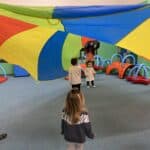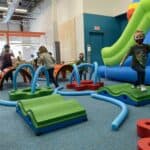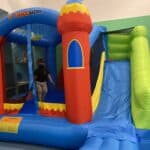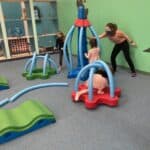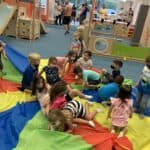Creating art can be an integral part of your child’s development. Painting, for example, helps stimulate the right side of your child’s brain, which is responsible for visual perception and comprehension. These skills are crucial for math, reading and other academics as they grow up. So, whether they’re using crayons or paint, art offers a lot of benefits for your child’s physical and cognitive growth.
Fine Motor Skills
Fine motor skills are the movements related to the small muscle groups in the hands, fingers and wrists that help children perform a variety of tasks, like writing, eating, holding things, or buttoning up their shirt. Painting and drawing and coloring are great development tools for young children that can help them achieve many different developmental milestones in a fun and engaging way. It also encourages creativity and cognitive development. The earlier a child develops strong fine motor skills, the better they’ll be able to complete everyday tasks independently and function successfully in life.
Communication Skills
Art is a very powerful tool for a young child to develop their communication skills. It can also be a tool for older children who have delayed verbal skills to use.
First Stage (1-2 years): Children explore painting and drawing with their hands, learning about colors, shapes, and textures. They discover how to make simple lines and circles, as well as how to mix different colors together.
Second Stage (2-3.5 years): Through repeated experiences and experimentation, children learn to control their painting tools and create a piece of art they are proud of. They also begin to understand the concept of size, shape, making comparisons and counting.
Research shows that integrating arts into preschool classrooms can help small children regulate their emotions. This can lead to better student-teacher relations and prevent long term emotional issues in school.
Problem-Solving Skills
Painting, drawing, and coloring can all serve as great problem-solving development tools for a young child. As the child draws a picture, they can look for ways to solve problems they have experienced while making their art, such as a broken crayon or an uneven line. This is a good skill to learn early because it will be necessary for them to solve problems that they encounter in their lives as they grow older. It also helps them feel confident in their own abilities and gives them the confidence to try new things. Problem-solving is one of the most important skills that children can learn, especially in this day and age where technology is constantly around them and information is abundant. By providing children with a range of materials and time to explore them, they can practice these skills and build their confidence.
Self-Esteem
Studies have shown that arts-related activities, such as painting, drawing, and coloring, can boost a child’s self-esteem. The boost is especially significant for kids who are frequently engaged in arts activities. When a child is given praise and encouragement when they create their art project, it builds their self-esteem. It also encourages them to focus on the process, rather than the finished product.
Social Skills
Painting and coloring are great ways for young children to practice their social skills, like teamwork and cooperation. It’s also a good way to encourage them to get to know other children in their classroom or community. They also improve their nonverbal communication by learning how to express their emotions and feelings through their artwork, such as capturing a memory or imagining different worlds. This helps them learn how to communicate with others without words, a crucial skill they’ll need later in life.


